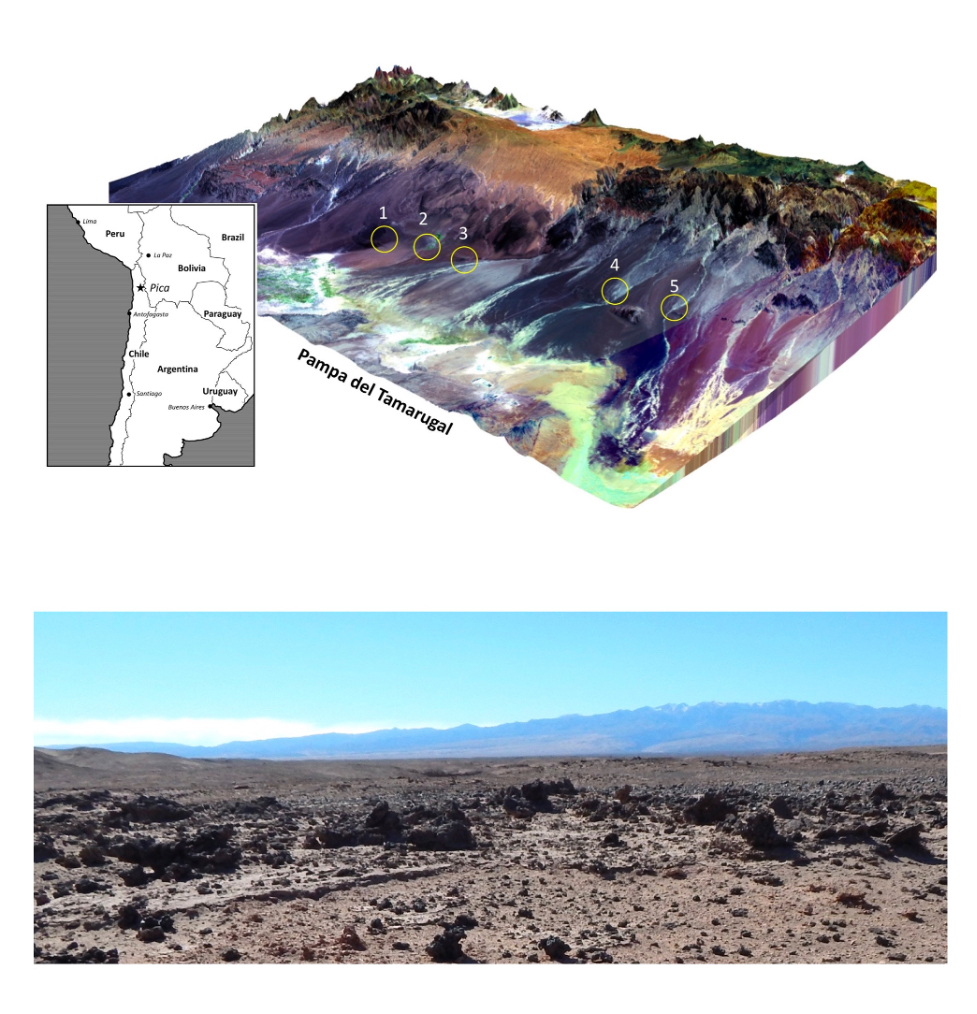Mysterious glass in the Atacama Desert may be from an ancient exploding comet
Intense heat and winds from an ancient comet may have burnt the sand into glass.

Mysterious bits of twisted glass strewn across Chile's Atacama Desert may have originated from a large comet that exploded in Earth's atmosphere around 12,000 years ago, according to a new study.
The ancient explosion — which may have been multiple back-to-back explosions — would have produced intense winds as strong as tornadoes and scorching heat that burned the desert sand, transforming it into silicate glass, or a solid that contains silicon and oxygen in a particular structure.
Though researchers first discovered these glass deposits around a decade ago, their origins had remained a mystery. The silicon glasses, some dark green and some black, are found in concentrated patches across a 47-mile-long (75 kilometers) corridor in the Atacama Desert, according to a statement from Brown University. The individual glasses are "twisted and folded " and have been found to stretch up to 20 inches (50 centimeters) across — slightly larger than a pizza box.
Related: Photos: The world's 6 most famous rocks
The researchers who first discovered the glasses hypothesized that they came from a bolide, or fireballs that explode in the atmosphere; but another group later concluded that the glasses were the result of intense grass fires, according to the new study. At the time, the area wasn't a desert, it had sandy soil, but also trees and grass, according to the statement.

To figure out the culprit, researchers from the U.S. and Chile conducted a chemical analysis of dozens of glass samples found in that desert. Inside the glass, the researchers found minerals called zircons, some of which had decomposed into baddeleyite, a rare zirconium oxide mineral, according to the statement. That transition from zircon to baddeleyite typically occurs at temperatures higher than 3,040 degrees Fahrenheit (1,670 degrees Celsius), much hotter than the temperature that grass fires would have reached, according to the statement.
The researchers also discovered minerals in the glasses that have previously been found only in meteorites and other rocks originating in space; some of the minerals, such as cubanite and troilite, were similar to the minerals discovered in samples from a comet called Wild 2 collected by NASA's Stardust mission. What's more, the odd, twisted shapes of the glasses also point to the intense heat and winds that would be produced by such a comet explosion. The researchers concluded that these glasses are likely the result of a comet similar to Wild 2.
Sign up for the Live Science daily newsletter now
Get the world’s most fascinating discoveries delivered straight to your inbox.
"This is the first time we have clear evidence of glasses on Earth that were created by the thermal radiation and winds from a fireball exploding just above the surface," lead author Pete Schultz, a professor emeritus at Brown University's Department of Earth, Environmental and Planetary Sciences, said in the statement. "To have such a dramatic effect on such a large area, this was a truly massive explosion. Lots of us have seen bolide fireballs streaking across the sky, but those are tiny blips compared to this."
The researchers estimated that the explosion occurred around 12,000 years ago, but they hope that further studies will help to pinpoint the date and size of the comet with more precision.
"It's too soon to say if there was a causal connection or not, but what we can say is that this event did happen around the same time as when we think the megafauna disappeared, which is intriguing," Schultz said. "There's also a chance that this was actually witnessed by early inhabitants, who had just arrived in the region. It would have been quite a show."
The study was published Nov. 2 in the journal Geology.
The findings were Originally published on Live Science.

Yasemin is a staff writer at Live Science, covering health, neuroscience and biology. Her work has appeared in Scientific American, Science and the San Jose Mercury News. She has a bachelor's degree in biomedical engineering from the University of Connecticut and a graduate certificate in science communication from the University of California, Santa Cruz.









